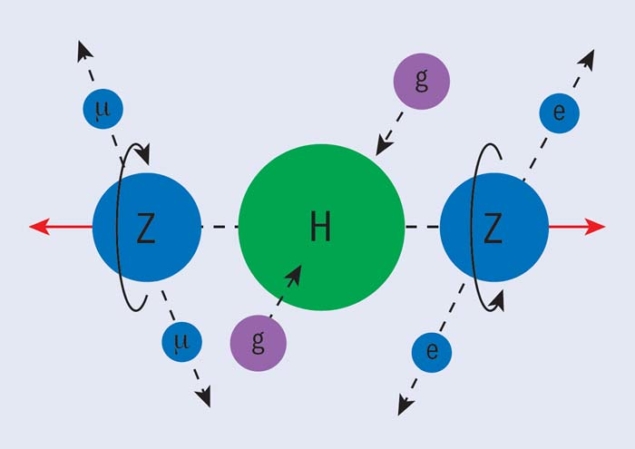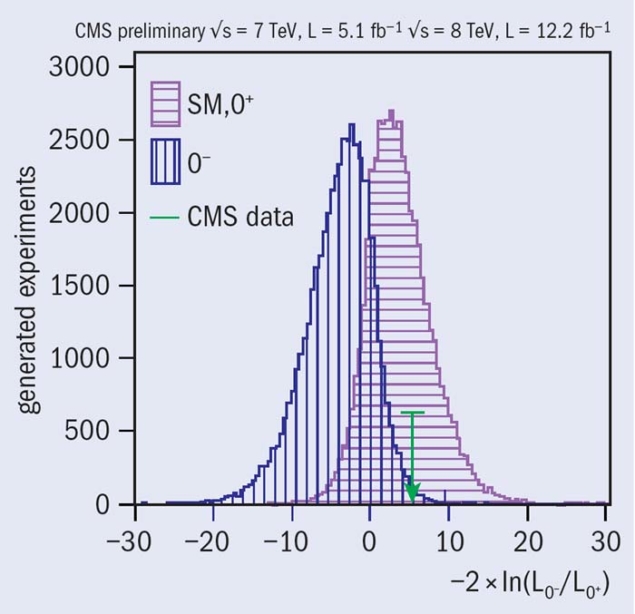More than 20 years ago, the CMS and ATLAS experiments at the LHC embarked on a long road into the unknown and, rather like Christopher Columbus, the two collaborations reached a new land last summer. But did they discover what they expected – the long awaited Higgs boson of the Standard Model – or have they found the first hint of a new unknown world? The only way to find out is to measure the characteristics of the new particle to establish if it is compatible with the expectations of the Standard Model.

The decay of the new boson to two Z bosons and subsequently to four leptons (figure 1) is an especially powerful tool. This decay channel produces four well measured tracks of particles in a low-background environment and contains a rich set of information that no other channel can provide. The CMS collaboration has exploited this information first to boost the significance of signal observed last summer and then to go even further. By using the decay kinematics – understanding how the masses and angles of all of the particles in the process are correlated – they have attempted to determine if the new particle is the Standard Model Higgs boson or a gateway to a new world.

Using the full event information, the analysis assigns to each event the probability that it is a genuine Higgs boson, a more exotic particle or is just background. From these probabilities, it is possible to say how likely one model is compared with another. Figure 2 shows the expected likelihood for a genuine scalar Higgs boson (pink) and a pseudo-scalar boson (blue). The two hypotheses differ in the parity of the particle; in effect, the pseudo-scalar boson has a reversed mirror image. The green arrow on the plot is the measurement showing that the probability of a pure pseudo-scalar boson is small, indicating that this option is largely disfavoured by the data. This observation makes it possible to rule out a set of possible extensions of the Standard Model. A similar test of the hypothesis of a spin-2 particle has also been performed but it requires more data for a conclusive result. These are just the first steps into this new world. Further studies of the new boson will be possible in future as more data become available.







